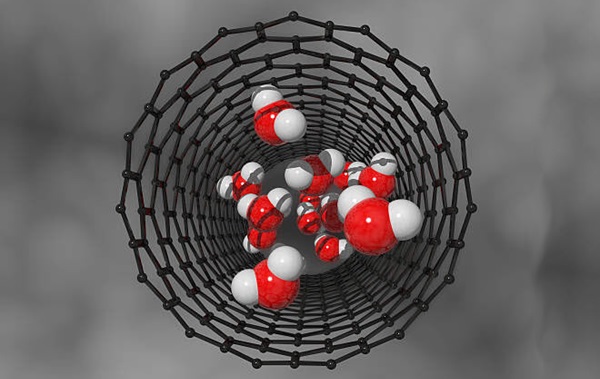Unleashing Effective Identification of ALS Based on Vowel Phonation: A Deep Learning Approach
Downloads
ALS (Amyotrophic Lateral Sclerosis) is one of the fatal diseases across the world. Therefore, early detection can save patients suffering from ALS from life-threatening consequences. Typically, ALS can be identified based on different factors, and one such factor is voice analysis. Detection of ALS using sound signals is convenient and simpler than other methods, as it is a non-invasive approach, which makes the process faster and more efficient for detection. However, detection of ALS using traditional approaches is challenging, as it is a time-consuming process and heavy reliance on medical experts is needed. Therefore, AI-based models can be used for effective classification of ALS and non-ALS patients, as AI-based models possess the immense ability to examine vast amounts of data, including audio files, effectively. Owing to these factors, the proposed model focuses on employing an AI-based model for ALS classification based on vowel phonation /a/ and /i/. The process is carried out using the Minsk2020 dataset, where important features needed for the proposed model are extracted using MFCC (Mel-frequency cepstral coefficients) by removing the shakiness and jitteriness of the voice. The MFCC feature extraction technique extracts features based on the mel scale, as this reflects human auditory perception, thereby extracting features that are useful for classification. These extracted features are fed to CNN-LSTM (Convolutional Neural Network – Long Short Term Memory) with rapid dilatenet for classifying ALS and non-ALS patients accurately by identifying even the subtle changes in audio signals using maximizing the expansion/dilation rate and aid the context information for interpreting and analyzing the sound of vowels accurately and correctly without any loss of information. Finally, the efficacy of the proposed model is assessed using evaluation metrics. The proposed research work can assist medical professionals in detecting patients with ALS based on vowel phonation.
Downloads
[1] Zhou, L., & Xu, R. (2024). Invertebrate genetic models of amyotrophic lateral sclerosis. Frontiers in Molecular Neuroscience, 17. doi:10.3389/fnmol.2024.1328578.
[2] Adashek, J. J., Pandya, C., Maragakis, N. J., De, P., Cohen, P. R., Kato, S., & Kurzrock, R. (2024). Neuregulin-1 and ALS19 (ERBB4): at the crossroads of amyotrophic lateral sclerosis and cancer. BMC Medicine, 22(1), 74. doi:10.1186/s12916-024-03293-3.
[3] Moțățăianu, A., Andone, S., Stoian, A., Bălașa, R., Huțanu, A., & Sărmășan, E. (2024). A Potential Role of Interleukin-5 in the Pathogenesis and Progression of Amyotrophic Lateral Sclerosis: A New Molecular Perspective. International Journal of Molecular Sciences, 25(7), 3782. doi:10.3390/ijms25073782.
[4] Mead, R. J., Shan, N., Reiser, H. J., Marshall, F., & Shaw, P. J. (2022). Amyotrophic lateral sclerosis: a neurodegenerative disorder poised for successful therapeutic translation. Nature Reviews Drug Discovery, 22(3), 185–212. doi:10.1038/s41573-022-00612-2.
[5] Colasuonno, F., Price, R., & Moreno, S. (2023). Upper and Lower Motor Neurons and the Skeletal Muscle: Implication for Amyotrophic Lateral Sclerosis (ALS). Roles of Skeletal Muscle in Organ Development. Advances in Anatomy, Embryology and Cell Biology, vol 236. Springer, Cham, Switzerland. doi:10.1007/978-3-031-38215-4_5.
[6] Masrori, P., & Van Damme, P. (2020). Amyotrophic lateral sclerosis: a clinical review. European Journal of Neurology, 27(10), 1918–1929. doi:10.1111/ene.14393.
[7] Xu, R.-S., & Yuan, M. (2021). Considerations on the concept, definition, and diagnosis of amyotrophic lateral sclerosis. Neural Regeneration Research, 16(9), 1723. doi:10.4103/1673-5374.306065.
[8] Štětkářová, I., & Ehler, E. (2021). Diagnostics of Amyotrophic Lateral Sclerosis: Up to Date. Diagnostics, 11(2), 231. doi:10.3390/diagnostics11020231.
[9] Keon, M., Musrie, B., Dinger, M., Brennan, S. E., Santos, J., & Saksena, N. K. (2021). Destination Amyotrophic Lateral Sclerosis. Frontiers in Neurology, 12. doi:10.3389/fneur.2021.596006.
[10] Benatar, M., Wuu, J., McHutchison, C., Postuma, R. B., Boeve, B. F., Petersen, R., Ross, C. A., Rosen, H., Arias, J. J., Fradette, S., McDermott, M. P., Shefner, J., Stanislaw, C., Abrahams, S., Cosentino, S., Andersen, P. M., Finkel, R. S., Granit, V., Grignon, A.-L., … Wuu, J. (2021). Preventing amyotrophic lateral sclerosis: insights from pre-symptomatic neurodegenerative diseases. Brain, 145(1), 27–44. doi:10.1093/brain/awab404.
[11] Biolabs, c. (2020). Rodent Amyotrophic Lateral Sclerosis (ALS) Model. Creative Biolabs, Shirley, United States.
[12] Sindhu, I., & Sainin, M. S. (2024). Automatic Speech and Voice Disorder Detection Using Deep Learning—A Systematic Literature Review. IEEE Access, 12, 49667–49681. doi:10.1109/access.2024.3371713.
[13] Teplansky, K. J., Wisler, A., Green, J. R., Heitzman, D., Austin, S., & Wang, J. (2023). Measuring Articulatory Patterns in Amyotrophic Lateral Sclerosis Using a Data-Driven Articulatory Consonant Distinctiveness Space Approach. Journal of Speech, Language, and Hearing Research, 66(8S), 3076–3088. doi:10.1044/2022_jslhr-22-00320.
[14] Donohue, C. A. (2021). Proactive Dysphagia Management of Patients with Neurodegenerative Diseases: Early Identification and Intervention. Ph.D. Thesis, University of Pittsburgh, Pittsburgh, United States.
[15] Ghasemzadeh, H., Doyle, P. C., & Searl, J. (2022). Image representation of the acoustic signal: An effective tool for modeling spectral and temporal dynamics of connected speech. The Journal of the Acoustical Society of America, 152(1), 580–590. doi:10.1121/10.0012734.
[16] Xu, Y., Liu, X., Cao, X., Huang, C., Liu, E., Qian, S., Liu, X., Wu, Y., Dong, F., Qiu, C.-W., Qiu, J., Hua, K., Su, W., Wu, J., Xu, H., Han, Y., Fu, C., Yin, Z., Liu, M., … Zhang, J. (2021). Artificial intelligence: A powerful paradigm for scientific research. The Innovation, 2(4), 100179. doi:10.1016/j.xinn.2021.100179.
[17] Cebola, R., Folgado, D., Carreiro, A., & Gamboa, H. (2023). Speech-Based Supervised Learning Towards the Diagnosis of Amyotrophic Lateral Sclerosis. Proceedings of the 16th International Joint Conference on Biomedical Engineering Systems and Technologies. doi:10.5220/0011694700003414.
[18] Simmatis, L. E., Robin, J., Pommée, T., McKinlay, S., Sran, R., Taati, N., Truong, J., Koyani, B., & Yunusova, Y. (2023). Validation of automated pipeline for the assessment of a motor speech disorder in amyotrophic lateral sclerosis (ALS). Digital Health, 9. doi:10.1177/20552076231219102.
[19] Cebola, R. A. S. M. (2022). Towards the Automatic Diagnosis of Amyotrophic Lateral Sclerosis from Speech. Master Thesis, Universidade NOVA de Lisboan, Lisbon, Portugal.
[20] Dash, D., Ferrari, P., Hernandez-Mulero, A. W., Heitzman, D., Austin, S. G., & Wang, J. (2020). Neural Speech Decoding for Amyotrophic Lateral Sclerosis. INTERSPEECH 2020, 25-29 October, 2020, Shanghai, China.
[21] Rowe, H. P., Gutz, S. E., Maffei, M. F., & Green, J. R. (2020). Acoustic-Based Articulatory Phenotypes of Amyotrophic Lateral Sclerosis and Parkinson's Disease: Towards an Interpretable, Hypothesis-Driven Framework of Motor Control. INTERSPEECH 2020, 25-29 October, 2020, Shanghai, China.
[22] Deeb, O., & Nabulsi, M. (2020). Exploring Multiple Sclerosis (MS) and Amyotrophic Lateral Scler osis (ALS) as Neurodegenerative Diseases and their Treatments: A Review Study. Current Topics in Medicinal Chemistry, 20(26), 2391–2403. doi:10.2174/1568026620666200924114827.
[23] Ueha, R., Cotaoco, C., Kondo, K., & Yamasoba, T. (2023). Management and Treatment for Dysphagia in Neurodegenerative Disorders. Journal of Clinical Medicine, 13(1), 156. doi:10.3390/jcm13010156.
[24] Younger, D. S., & Brown Jr, R. H. (2023). Amyotrophic lateral sclerosis. Handbook of Clinical Neurology, 196, 203-229, MedlinePlus Health Information, Maryland, United States. doi:10.1016/B978-0-323-98817-9.00031-4.
[25] Shabber, S. M., Bansal, M., & Radha, K. (2023). A Review and Classification of Amyotrophic Lateral Sclerosis with Speech as a Biomarker. 2023 14th International Conference on Computing Communication and Networking Technologies (ICCCNT), 1–7. doi:10.1109/icccnt56998.2023.10308048.
[26] Zhang, J., & Singh, R. (2024). Vocal Fold Dynamics for Automatic Detection of Amyotrophic Lateral Sclerosis from Voice. ICASSP 2024 - 2024 IEEE International Conference on Acoustics, Speech and Signal Processing (ICASSP), 311–315. doi:10.1109/icassp48485.2024.10448151.
[27] Abdulmajeed, N. Q., Al‐Khateeb, B., & Mohammed, M. A. (2023). Voice pathology identification system using a deep learning approach based on unique feature selection sets. Expert Systems, 42(1), 13327. doi:10.1111/exsy.13327.
[28] AL-Dhief, F. T., Latiff, N. M. A., Malik, N. N. N. Abd., Sabri, N., Baki, M. M., Albadr, M. A. A., Abbas, A. F., Hussein, Y. M., & Mohammed, M. A. (2020). Voice Pathology Detection Using Machine Learning Technique. IEEE 5th International Symposium on Telecommunication Technologies (ISTT), 99–104. doi:10.1109/istt50966.2020.9279346.
[29] Milella, G., Sciancalepore, D., Cavallaro, G., Piccirilli, G., Nanni, A. G., Fraddosio, A., D’Errico, E., Paolicelli, D., Fiorella, M. L., & Simone, I. L. (2023). Acoustic Voice Analysis as a Useful Tool to Discriminate Different ALS Phenotypes. Biomedicines, 11(9), 2439. doi:10.3390/biomedicines11092439.
[30] Tena, A., Clarià, F., Solsona, F., & Povedano, M. (2022). Detecting Bulbar Involvement in Patients with Amyotrophic Lateral Sclerosis Based on Phonatory and Time-Frequency Features. Sensors, 22(3), 1137. doi:10.3390/s22031137.
[31] Vengalil, S., Nashi, S., Preethish-Kumar, V., Polavarapu, K., & Nalini, A. (2024). Amyotrophic Lateral Sclerosis. Case-based Approach to Common Neurological Disorders. Springer, Singapore. doi:10.1007/978-981-99-8676-7_18.
[32] Iluț, S., Stan, A., Rahovan, I., Hapca, E., Strilciuc, S., & Muresanu, D. (2023). Variants of Amyotrophic lateral sclerosis and rehabilitation: an overview. Balneo and PRM Research Journal, 14(2), 559. doi:10.12680/balneo.2023.559.
[33] Tena, A., Clarià, F., Solsona, F., & Povedano, M. (2023). Voiceprint and machine learning models for early detection of bulbar dysfunction in ALS. Computer Methods and Programs in Biomedicine, 229, 107309. doi:10.1016/j.cmpb.2022.107309.
[34] Luptáková, I. D., Hanuliaková, J., Žido, L., & Bartoš, P. (2025). M-Learning and Experiential Learning in Vocational Education. Emerging Science Journal, 8, 298–310. doi:10.28991/ESJ-2024-SIED1-017.
[35] Tena, A., Claria, F., Solsona, F., Meister, E., & Povedano, M. (2021). Detection of Bulbar Involvement in Patients with Amyotrophic Lateral Sclerosis by Machine Learning Voice Analysis: Diagnostic Decision Support Development Study. JMIR Medical Informatics, 9(3), e21331. doi:10.2196/21331.
[36] Cave, R., & Bloch, S. (2021). The use of speech recognition technology by people living with amyotrophic lateral sclerosis: a scoping review. Disability and Rehabilitation: Assistive Technology, 18(7), 1043–1055. doi:10.1080/17483107.2021.1974961.
[37] Vashkevich, M., & Rushkevich, Yu. (2021). Classification of ALS patients based on acoustic analysis of sustained vowel phonations. Biomedical Signal Processing and Control, 65, 102350. doi:10.1016/j.bspc.2020.102350.
[38] Likhachov, D., Vashkevich, M., Azarov, E., Malhina, K., & Rushkevich, Y. (2021). A Mobile Application for Detection of Amyotrophic Lateral Sclerosis via Voice Analysis. Speech and Computer: Lecture Notes in Computer Science (SPECOM 2021), Springer, Cham, Switzerland. doi:10.1007/978-3-030-87802-3_34.
[39] Simmatis, L. E. R., Robin, J., Spilka, M. J., & Yunusova, Y. (2024). Detecting bulbar amyotrophic lateral sclerosis (ALS) using automatic acoustic analysis. BioMedical Engineering OnLine, 23(1), 15. doi:10.1186/s12938-023-01174-z.
[40] Kurmi, O. P., Gyanchandani, M., Khare, N., & Pillania, A. (2023). Classification of Amyotrophic Lateral Sclerosis Patients using speech signals. 2023 Third International Conference on Secure Cyber Computing and Communication (ICSCCC), 172–177. doi:10.1109/icsccc58608.2023.10176797.
[41] Vashkevich, M., Gvozdovich, A., &Rushkevich, Y. (2019). Detection of Bulbar Dysfunction in ALS Patients Based on Running Speech Test. Pattern Recognition and Information Processing. PRIP 2019. Communications in Computer and Information Science, 1055, Springer, Cham, Switzerland. doi:10.1007/978-3-030-35430-5_16.
[42] Lv, C., Fan, L., Li, H., Ma, J., Jiang, W., & Ma, X. (2024). Leveraging multimodal deep learning framework and a comprehensive audio-visual dataset to advance Parkinson’s detection. Biomedical Signal Processing and Control, 95, 106480. doi:10.1016/j.bspc.2024.106480.
[43] Alqahtani, A., Alsubai, S., Sha, M., Dutta, A. K., & Zhang, Y.-D. (2024). Intellectual assessment of amyotrophic lateral sclerosis using deep resemble forward neural network. Neural Networks, 178, 106478. doi:10.1016/j.neunet.2024.106478.
[44] Mahum, R., El-Sherbeeny, A. M., Alkhaledi, K., & Hassan, H. (2024). Tran-DSR: A hybrid model for dysarthric speech recognition using transformer encoder and ensemble learning. Applied Acoustics, 222, 110019. doi:10.1016/j.apacoust.2024.110019.
[45] Rong, P., Heidrick, L., & Pattee, G. L. (2024). A multimodal approach to automated hierarchical assessment of bulbar involvement in amyotrophic lateral sclerosis. Frontiers in Neurology, 15. doi:10.3389/fneur.2024.1396002.
[46] Mehra, S., Ranga, V., & Agarwal, R. (2024). A deep learning approach to dysarthric utterance classification with BiLSTM-GRU, speech cue filtering, and log mel spectrograms. The Journal of Supercomputing, 80(10), 14520–14547. doi:10.1007/s11227-024-06015-x.
- This work (including HTML and PDF Files) is licensed under a Creative Commons Attribution 4.0 International License.



















